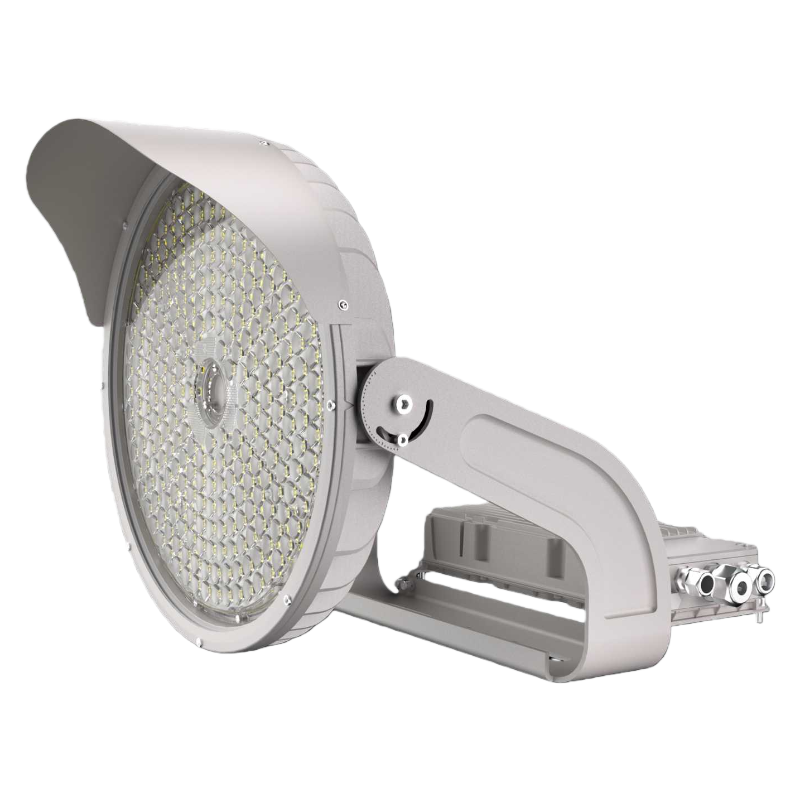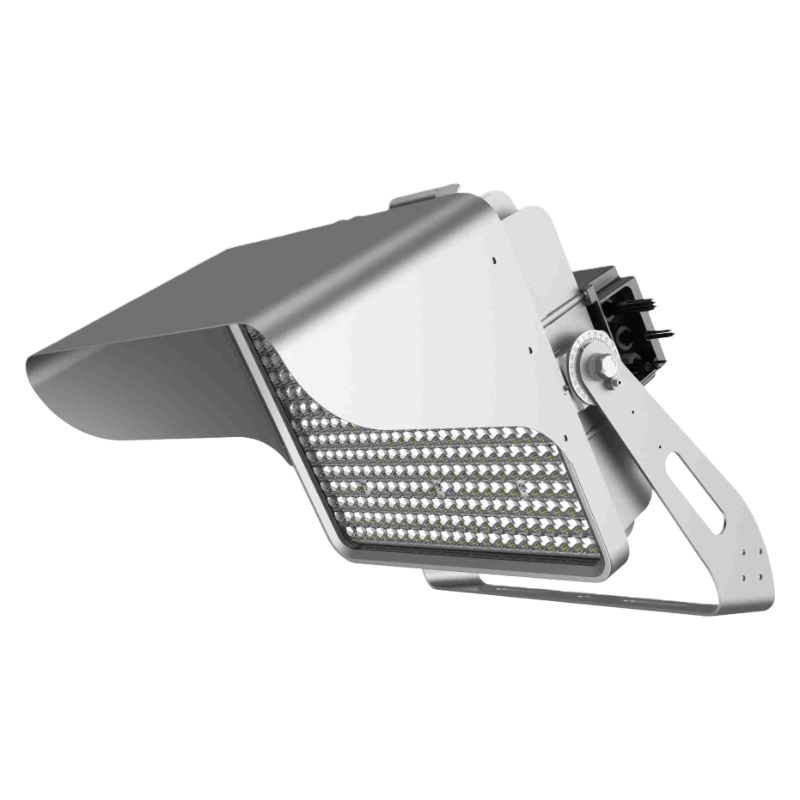How do I choose the right UFO High Bay Light wattage?
Choosing the right wattage for your UFO High Bay Light is a critical decision that balances three core goals: adequate brightness for safety and productivity, energy efficiency to control costs, and long-term reliability. Pick a wattage too low, and you’ll end up with dim "dark zones" that slow down operations and increase accidents. Go too high, and you’ll waste thousands on unnecessary energy bills and over (over-illumination) that causes eye strain. This blog breaks down the step-by-step process to select the perfect wattage, covering space factors, lighting standards, environmental variables, and real-world examples.
1. Start with Space Height: The Most Critical Factor
UFO High Bay Lights are designed for high-ceiling spaces, but wattage needs skyrocket as ceiling height increases—light loses intensity as it travels downward, a phenomenon known as the inverse square law (light intensity decreases with the square of the distance from the source). Here’s a proven height-to-wattage guide based on industry standards (IESNA, 2024):
-
100W–150W8–12 meters (26–39 ft)**: This is the most common range for warehouses, medium-sized factories, and garages. A wattage of is ideal. For example, a 120W UFO High Bay with 180 lumens/W (21,600 lumens) delivers uniform coverage for 80–100 sq. ft. per fixture, avoiding hotspots or shadows.
-
150W–250W12–18 meters (39–59 ft)**: Taller spaces like large distribution centers or heavy-industry factories require more power. Opt for fixtures. A 200W model (36,000 lumens) penetrates deeper, ensuring ground-level brightness stays above 500 lux—critical for forklift operations and high-rack picking.
-
250W–400W18+ meters (59+ ft)**: Ultra-high ceilings (e.g., aircraft hangars, large manufacturing plants) demand UFO High Bays. These fixtures use narrow beam angles (15–30°) to focus light downward, with 400W models (72,000 lumens) maintaining 300+ lux at ground level even from 20 meters up.
Common Mistake: Using 100W fixtures in 15-meter ceilings. This results in just 150–200 lux at ground level—well below the 300 lux minimum for safe warehouse operations (OSHA, 2024).
2. Calculate Area & Layout: Avoid Over- or Under-Lighting
Ceiling height alone isn’t enough—your space’s square footage and layout (e.g.,货架 density, equipment placement) determine how many fixtures you need, and thus the total wattage required. Follow this formula:
Total Required Lumens = Space Area (sq. ft) × Target Lux Level
Then, divide total lumens by the lumens per fixture (based on wattage and efficacy) to get the number of fixtures. Here’s a real-world example:
Scenario: 5,000 sq. ft. warehouse with 10-meter ceilings, target lux = 400 (general storage).
-
Total Required Lumens = 5,000 × 400 = 2,000,000 lumens
-
Choose 150W UFO High Bays (180 lm/W = 27,000 lumens each)
-
Number of Fixtures = 2,000,000 ÷ 27,000 ≈ 74 fixtures
-
Total System Wattage = 74 × 150W = 11,100W (11.1kW)
For spaces with dense shelving (e.g., pallet racks), add 10–15% to the total lumens to account for light blockage. Narrow aisles may also require fixtures with narrower beam angles (30–45°) to avoid wasting light on racking.
3. Match Wattage to Lighting Requirements (Lux Levels)
Different industrial tasks demand different brightness levels. Choosing wattage without considering lux needs leads to either insufficient light for precision work or wasted energy for low-activity areas. Here are common场景 (scenarios) and their recommended lux/wattage pairs:
|
Application
|
Target Lux Level
|
Ceiling Height (8–12m)
|
Ceiling Height (12–18m)
|
|---|---|---|---|
|
General Storage/Warehousing
|
300–500 lux
|
100W–120W
|
150W–200W
|
|
Picking/Sorting (Color-Coded)
|
500–750 lux
|
120W–150W
|
200W–250W
|
|
Precision Manufacturing (Electronics/Automotive)
|
750–1500 lux
|
150W–200W
|
250W–300W
|
|
Cold Storage (-10°C to 0°C)
|
300–400 lux
|
120W–150W (cold-resistant LEDs)
|
200W–220W (cold-resistant LEDs)
|
4. Account for Environmental Factors
Harsh industrial environments can reduce light output, so you may need to upsize wattage slightly to compensate:
-
Dusty/ Smoky Spaces**: Factories with sawdust, cement dust, or smoke (e.g., welding shops) coat fixtures over time, reducing light transmission by 10–20%. Add 10% to your calculated wattage (e.g., 150W → 165W) or choose fixtures with IP67 ratings for easy cleaning.
-
Humid/Cold Areas**: Cold storage or coastal warehouses with high humidity can lower LED efficacy by 5–10%. Opt for wattages at the higher end of your range (e.g., 120W → 130W) to maintain brightness.
-
Outdoor/ Semi-Outdoor Use**: Loading docks or covered yards exposed to sunlight need higher wattage during the day to overcome glare. A 150W fixture works for night, but bump to 200W for daytime visibility.
5. Balance Wattage with Energy Efficiency & Cost
Higher wattage doesn’t always mean better—modern UFO High Bays with high efficacy (160+ lm/W) deliver more brightness per watt, letting you use lower wattages without sacrificing light. For example:
-
A 120W UFO High Bay with 180 lm/W (21,600 lumens) performs as well as a 150W model with 140 lm/W (21,000 lumens) but uses 20% less energy.
-
Look for DLC 5.1-certified fixtures—they meet strict efficacy standards and qualify for utility rebates ($0.10–$0.20 per kWh saved), offsetting upfront costs.
Calculate the Total Cost of Ownership (TCO) to avoid short-sighted decisions. A 150W DLC-certified fixture ($200) may cost $50 more upfront than a 120W non-certified model ($150), but it saves $300+ in energy and rebates over 5 years.
6. Real-World Case Studies: Wattage Done Right
Case 1: Medium Warehouse (10m Ceilings, 8,000 sq. ft.)
Goal: 400 lux for general storage. Initial plan: 80x 100W UFO High Bays (total 8kW). Issue: Inconsistent brightness (250–350 lux) due to underpowered fixtures. Solution: Switch to 60x 150W fixtures (180 lm/W, total 9kW). Result: Uniform 420 lux, energy savings of 15% vs. original plan (due to higher efficacy), and $1,200/year in rebates.
Case 2: Automotive Repair Shop (8m Ceilings, 1,500 sq. ft.)
Goal: 750 lux for engine repairs. Mistake: Using 4x 200W fixtures (too high, 1000+ lux, eye strain). Solution: 6x 120W fixtures (180 lm/W). Result: Perfect 780 lux, 30% lower energy use, and reduced glare for mechanics.
Final Checklist for Choosing Wattage
-
Measure ceiling height and match to the height-to-wattage guide (8–12m = 100–150W; 12–18m = 150–250W).
-
Calculate total required lumens (area × target lux) and number of fixtures.
-
Adjust for environment (add 10–15% for dust/humidity).
-
Prioritize high-efficacy (160+ lm/W) fixtures to minimize wattage.
-
Verify TCO and rebate eligibility with DLC-certified models.
Conclusion: Wattage Is About Precision, Not Guesswork
Choosing the right UFO High Bay Light wattage isn’t a "one-size-fits-all" task—it requires balancing space dimensions, lighting needs, and efficiency. By starting with ceiling height, calculating lumens, and accounting for environmental factors, you’ll select a wattage that delivers safe, uniform brightness while keeping energy costs in check. Remember: the best wattage is the one that meets your specific needs without waste. With this guide, you’ll avoid common pitfalls and make a lighting investment that pays off for years.











